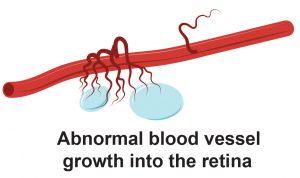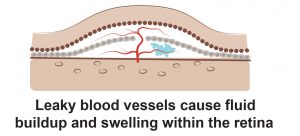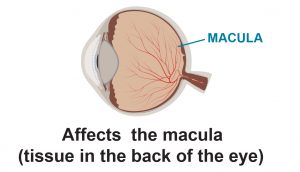A chronic, degenerative condition affecting central vision
Age-related macular degeneration (AMD) or Macular Degeneration is a chronic, degenerative eye condition that gradually diminishes central vision, blurring or obscuring what you see when you look straight ahead. AMD, is caused by the thinning of the macula (MAK-u-luh), a part of the retina that is responsible for central vision1. With AMD, you may see a blank area in your vision or straight lines may look wavy1. It may be difficult to read a book, locate the edge of a kerb or recognise faces.

There are two forms of AMD: dry and wet2. All AMD begins as “dry.” In some cases, it progresses to “wet,” which is a more severe form characterised by abnormal blood vessel growth that produces fluid in the retina2. Wet age-related macular degeneration (wet AMD) is the leading cause of severe vision loss and legal blindness in people over the age of 65 in North America, Europe, Australia and Asia.



Because wet AMD progresses rapidly and there is currently no cure, it is important to be proactive to slow vision loss1 . You should see an eye doctor when you first notice changes in your vision, and work closely with your eye care team to monitor the progression once you are on treatment.
-
National Eye Institute. Facts About Age-Related Macular Degeneration. Available at https://nei.nih.gov/health/maculardegen/armd_facts. Accessed July 2019.
-
Ambati J and Fowler BJ. Mechanisms of age-related macular degeneration. Neuron. 2012;75(1):26–39.
-
Schmidt-Erfurth U, et al. Guidelines for the management of neovascular age-related macular degeneration by the European Society of Retina Specialists (EURETINA). Br J Ophthalmol. 2014;98:1144-1167.

